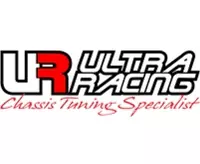
WHAT IS VEHICLE HANDLING
UNDERSTEER
The front wheels are likely to slip towards outside of the turn angle, driver
can solve it by turning a little more slightly but the handling is reduced,
vehicle’s behavior is less predictable and tires are likely to worn out faster.
Understeer often occurs in front wheel drive layout vehicles.

OVERSTEER
The rear wheels are likely to slide towards the outside of the turn more than the front. The driver must correct by steering away from the corner otherwise the vehicle will tend to spin when it has been pushed to its limit. Oversteer often occurs in rear wheel drive layout vehicles.
1. As most modern cars go, car manufacturers employ the FF (Front engine, Front wheel drive) setup for improving driver and passenger safety. The natural behavior of an FF car is to have a slight understeer, due to its heavier front end. Understeer happens when the front wheels lose their traction and won’t turn any sharper, even when the steering is being corrected to turn the car more. This will cause the car to go wide instead of following the line. Understeer can be corrected by stiffening the rear end of the vehicle by adding a Rear Strut Bar and a Rear Anti Roll Bar.
2. Oversteer is when the rear tires lose grip and causing the rear end of the vehicle slides out of a corner. This phenomenon happens particularly to FR (Front engine, Rear wheel drive) or RR (Rear engine, Rear wheel drive) cars. Oversteer can be corrected by stiffening the front end of the vehicle by adding Front Strut Bars and Front Anti Roll Bars.
WHAT AFFECTS HANDLING?
When any of the wheels loses contact with the road surface, there will be a deviate in handling; each of the suspension system should keep all wheels on the road surface in spite of hard cornering and in change of steering position. It’s always pleasing that that car can be set for a tiny amount of understeer so that it responds predictably to a turn of a steering wheel and the rear wheels to have a smaller dip angle than the front wheels. However this may not be achievable at all times due to the vehicle load, road condition, weather, speed and this consumes excessive time for the driver to adopt.
STRUT BAR AND LOWER ARM BAR
BEFORE :
Part of the shock of impact transfer to the chassis, causing wheel house and lower arm deforming.

AFTER :
Equip with the Ultra Racing’s strut bar and lower arm bar, both side shock of impact will be neutralized.
BEFORE :
The weight transfer and force gathering on one side, causing unstable
handling and increasing body roll.
AFTER :
The force will spread out by Ultra Racing’s strut bar and lower arm bar, stabilize the car and provide solid handling.
FENDER BAR
BEFORE :
The joint between A-pillar and front chassis will be push and twist by the greater shock of impact and drag force, causing damage on chassis.
AFTER :
Ultra Racing’s Fender bar will spread out the force and strengthen the section, prevent further damage and offer stable handling. Recommend for user of sport absorber.
SIDE LOWER BAR
BEFORE :
On uneven / bumpy road, center section chassis will have different level of body flex cause by the weight transfer between front and rear.
AFTER :
Ultra Racing’s side lower bar will stabilize the weight transfer between front and rear, it can also minimize the damage from side impact.
ANTI ROLL BAR
BEFORE :
When turning in corner, the weight transfer will make the car sway a side, causing body roll and more difficult to turn in to a corner, weaken the steering respond.
AFTER :
The upgrade version of Ultra Racing’s anti roll bar will be more effectively preventing the car sway a side at cornering, greatly reduce body roll and high stability in cornering.
Ultra Racing
25, Jalan Bukit Permai Utama 3 Taman Industri Bukit Permai Cheras, 56100 Kuala Lumpur, Malaysia
Responsible Person in the EU
Wankelshop
Ayinger Str. 1
85653 Aying, Germany
ask@wankelshop.com














